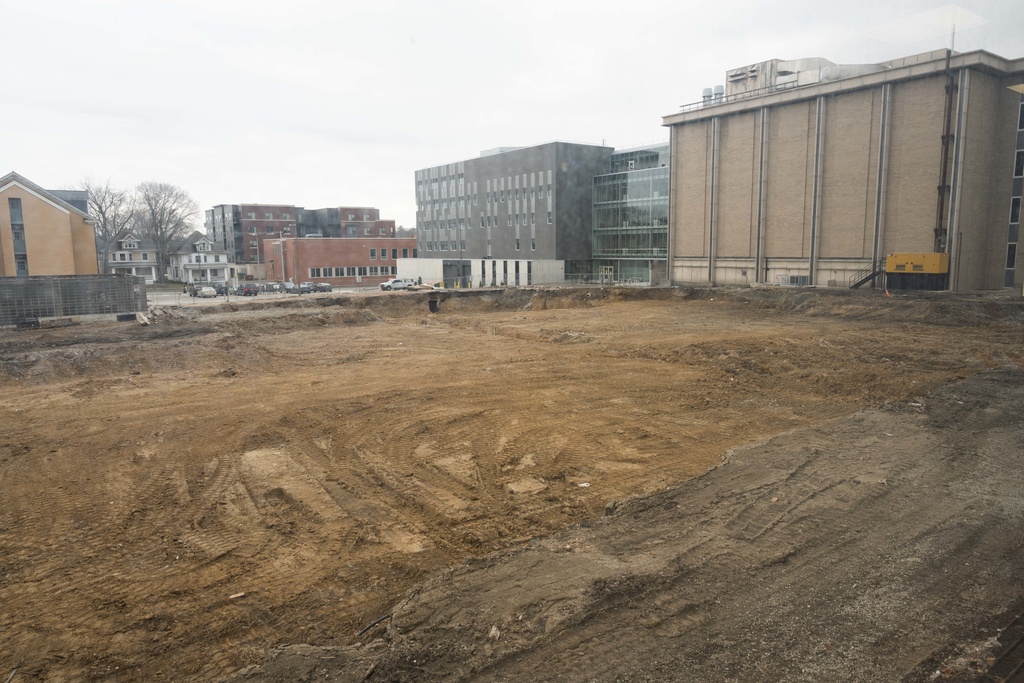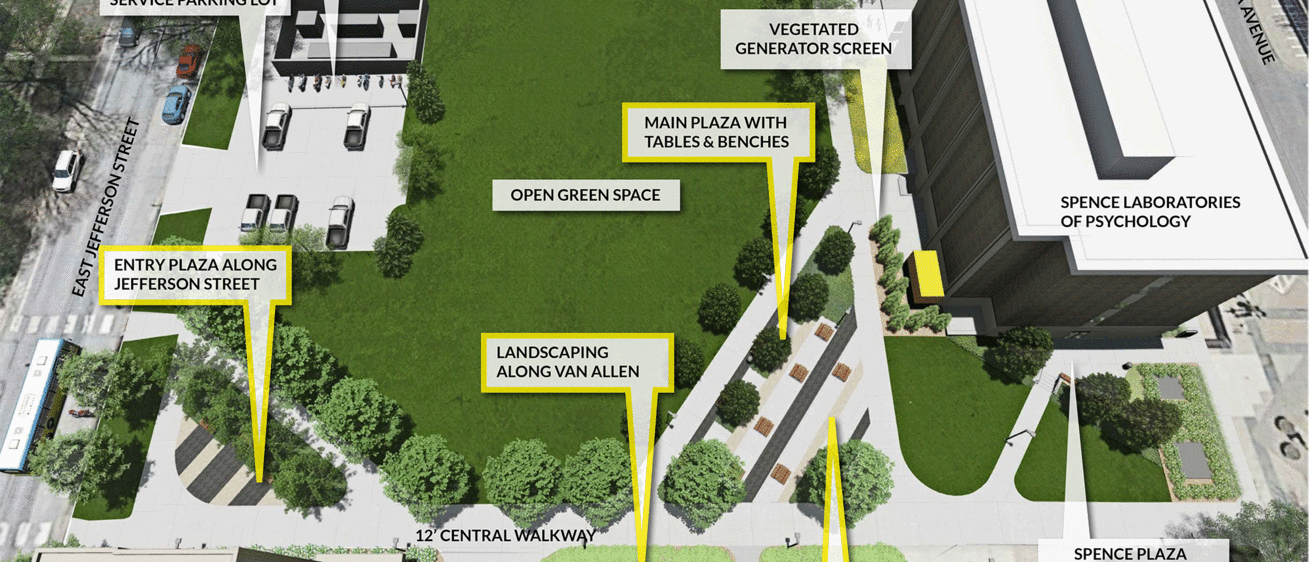The University of Iowa is going even greener.
The recent removal of Seashore Hall on East Jefferson Street created a unique opportunity for the UI to reimagine an area that has been occupied for more than 100 years.
Rather than erect a new building in its place, the university will create a multipurpose green space that will serve as a place to study, hold outdoor classes or small events, and more.
“Our campus is lacking in spaces like this for individuals to just sit outside away from the busy street and sidewalks,” says Scott Gritsch, associate director of landscape services. “This space will provide the potential for outdoor classes and building occupants to go somewhere and take lunch or breaks where there is a possible space for food trucks. This area also could be used during events like the Iowa City Jazz Festival, the Iowa Arts Festival, and other city events.”
Seashore Hall, which sat between Jefferson Street and Iowa Avenue adjacent to Van Allen Hall, was the UI’s first teaching hospital, as well as the first academic medical facility west of the Mississippi River. The hospital opened in the winter of 1898 with a dual purpose, one that lives on in the UI’s academic medical mission today: Nurse patients to health while providing a platform for students to study and practice medicine.
The building, with a French-inspired architectural design, was a chameleon of sorts—it was rechristened three times and over time became the home of various academic departments, including education, sociology, and journalism. In the late 1920s, it began serving as the headquarters of the Department of Psychological and Brain Sciences, founded by Carl Seashore, for whom the building was renamed in 1981.
A wing of the building was razed in 2017 to make way for the new Psychological and Brain Sciences Building, which opened in January 2020. The remaining wing was razed in late 2020.

A prerequisite to the green space project was relocating offices and programs from Seashore Hall to new or existing facilities.
“When we realized the future of Seashore Hall, the first step was to build the Psychological and Brain Sciences Building and move Psychology into their new home,” says Joe Bilotta, director of campus planning. “We were able to empty half the building and put them into a facility that was designed accordingly.”
While the rest of the offices and programs located in Seashore Hall were moved to other parts of campus, the open space created by the removal of one of the university’s oldest buildings is intended not only to decrease operating costs but also connect the downtown and North Side Neighborhood in a visual way.
“What this allows us to do is improve the community connection with and through campus,” says Bilotta. “We are creating a nice pedestrian corridor and further linking bikeways and pedestrian systems throughout campus.”
The green space is one of many aspects of the university’s master plan that addresses the needs of students.
“It’s all about the student experience. And if we can provide spaces for individuals and groups to meet or have enjoyable, positive interactions while here at the university, we have succeeded,” says Gritsch.
The university plans place a historical marker commemorating Seashore Hall in the green space to remember a building that was an important part of campus for more than 100 years.
The green space will be complete in September.
